The spring lockdown has had a huge impact on traditional retail. Segments such as electronics, DIY and FMCG non-food products were the first to be hit. The most radical forecasts even predicted a quick agony of the traditional format of retail stores, which was familiar to us before the pandemic.
Indeed, modern retail has many problems, although classic retail has not yet become a thing of the past, and online has not yet completely replaced it. Today retail combines the traditions of classic retail and actively implements digital solutions, forming a kind of hybrid — phygital — from physical and digital retail.
The main paradigm of this “unification” is that these two different formats are now inseparable from each other. Digital experience makes modern retail more convenient, comfortable and interesting, but people still continue to come to stores in person to select products in the “real” world.
Retail innovation in the coming year will focus less on media hype than on behind-the-scenes technology aimed at flawless inventory and supply chain business and artificial intelligence designed to anticipate consumer demand and manage customer loyalty.
We talk about trends and startups that are revolutionizing the physical retail trade we are used to. Teaser: artificial intelligence is making retail smarter, stores are opening up a new world of shopping from unusual places, and delivery is now handled by robots.
Who needs checkouts?
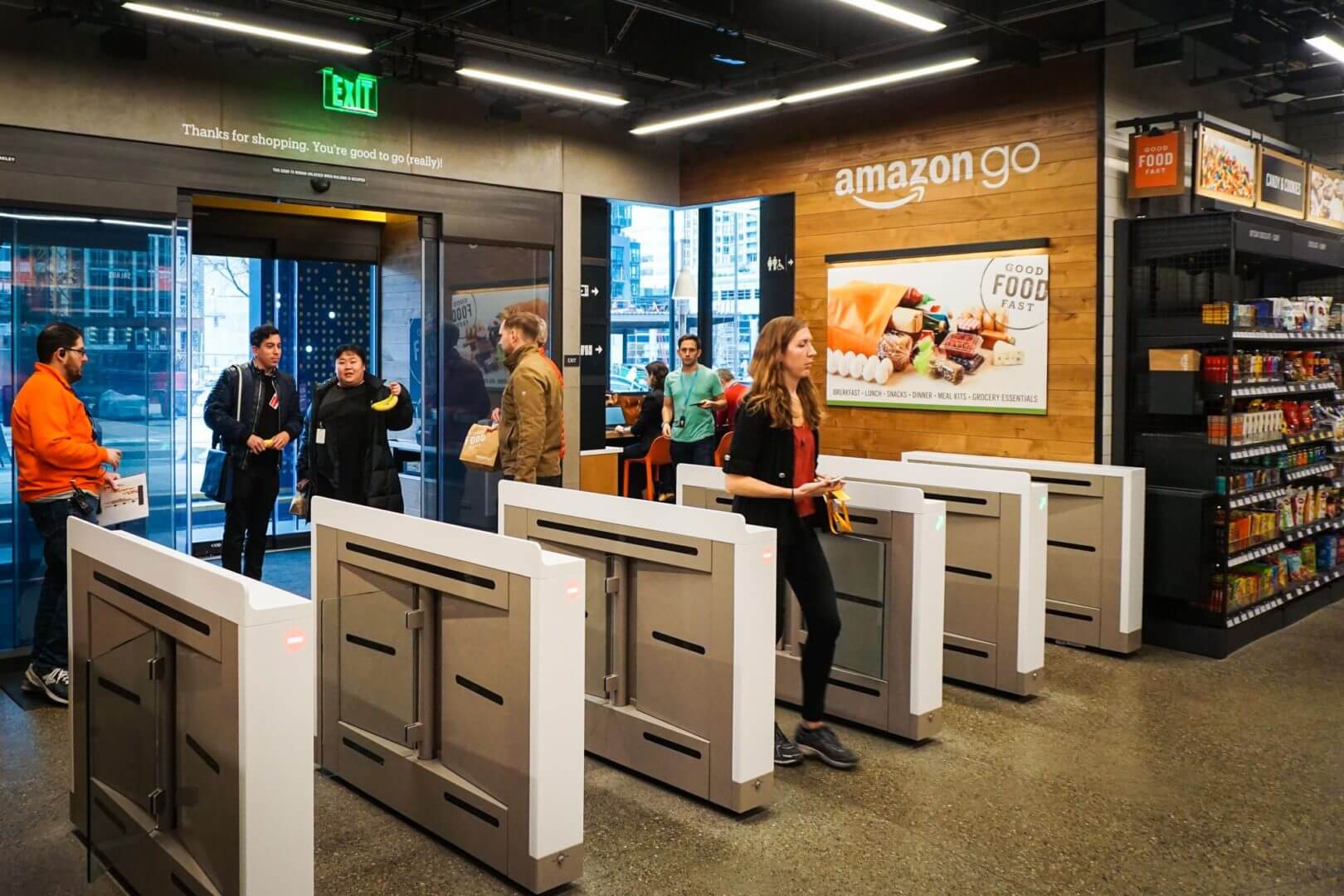
Opened to customers in 2018 (before that, the store served only the company’s employees for 2 years, until the technologies used in it were perfected), the ultra-modern Amazon Go store showed what the «store of the future» should be like.
By 2021, 26 retail outlets “without cashiers” were already operating in the United States. The chain stores operate in Seattle, Chicago, San Francisco and New York. Now they have become commonplace for citizens, although Amazon began testing this format back in 2016.
Since then, the “retail without cash registers” trend has stepped far forward, opening up a whole range of different formats for operators and practically endless opportunities for development.

NanoStore is an automated store from the AiFi operator based in Santa Clara, California. Completely ready-made «C-stores in a container» can be quickly placed in places where a large flow of consumer traffic is concentrated — at airports and train stations, student campuses, gas stations, residential areas, etc.
The AiFi Nanoctor requires minimal «human intervention». Inventory and shelf optimization are monitored by our own OASIS software platform.

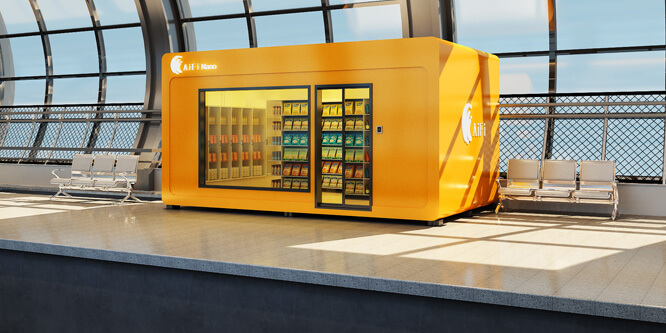
Such a store parameter allows you to organize sales in a 24/7/365 format without additional overhead costs. And what is most interesting is that the AiFi nanostore can be deployed even temporarily, for example, to serve any holidays «on the road.»
Designed with ease of deployment in mind, it can be packaged and easily shipped worldwide. At present, AiFi nanostores are being developed jointly with partners in different countries.
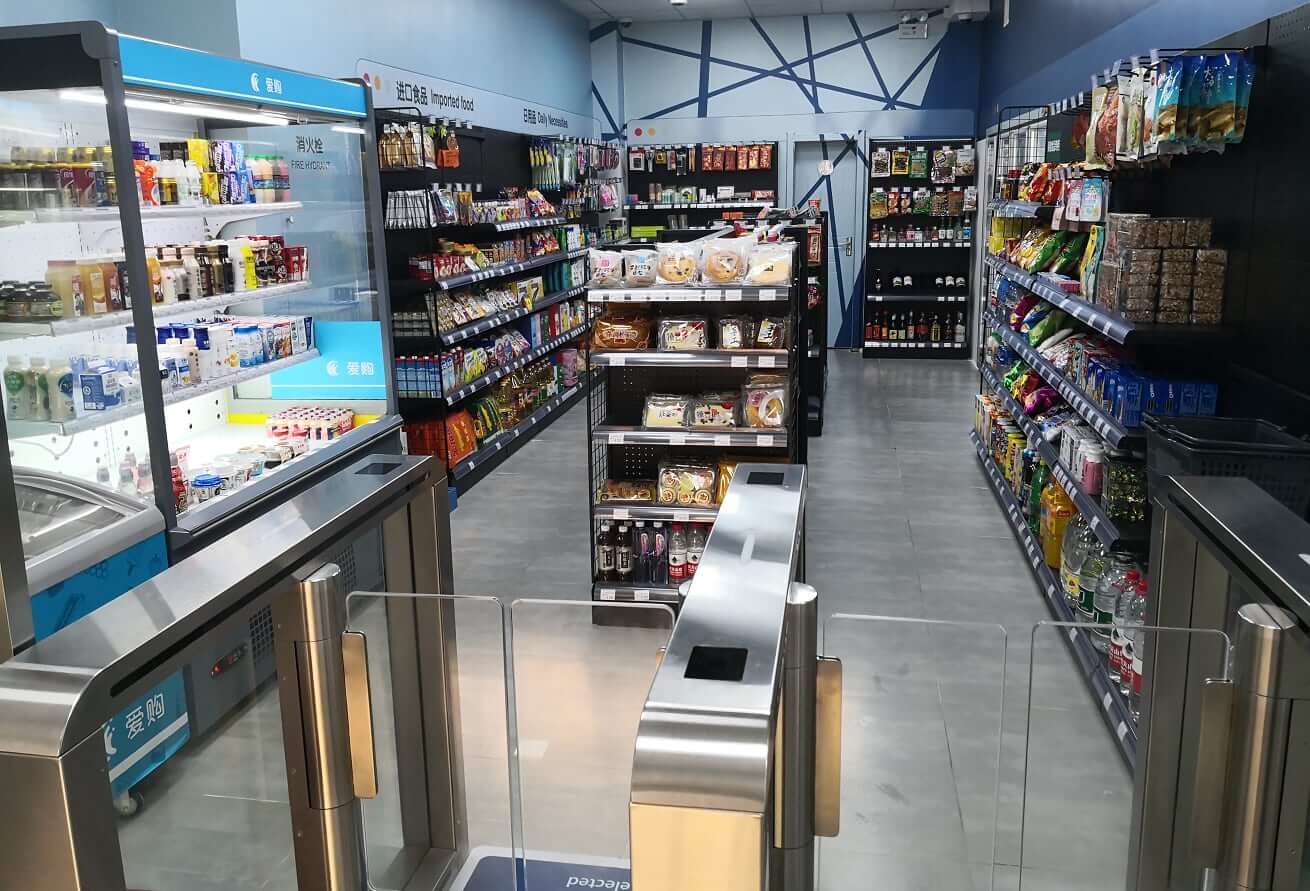
Examples include Albert Heijn nanostores at Amsterdam Schiphol Airport, as well as standalone convenience stores in Campbell, California, or standalone nanostores in Shanghai (see image).
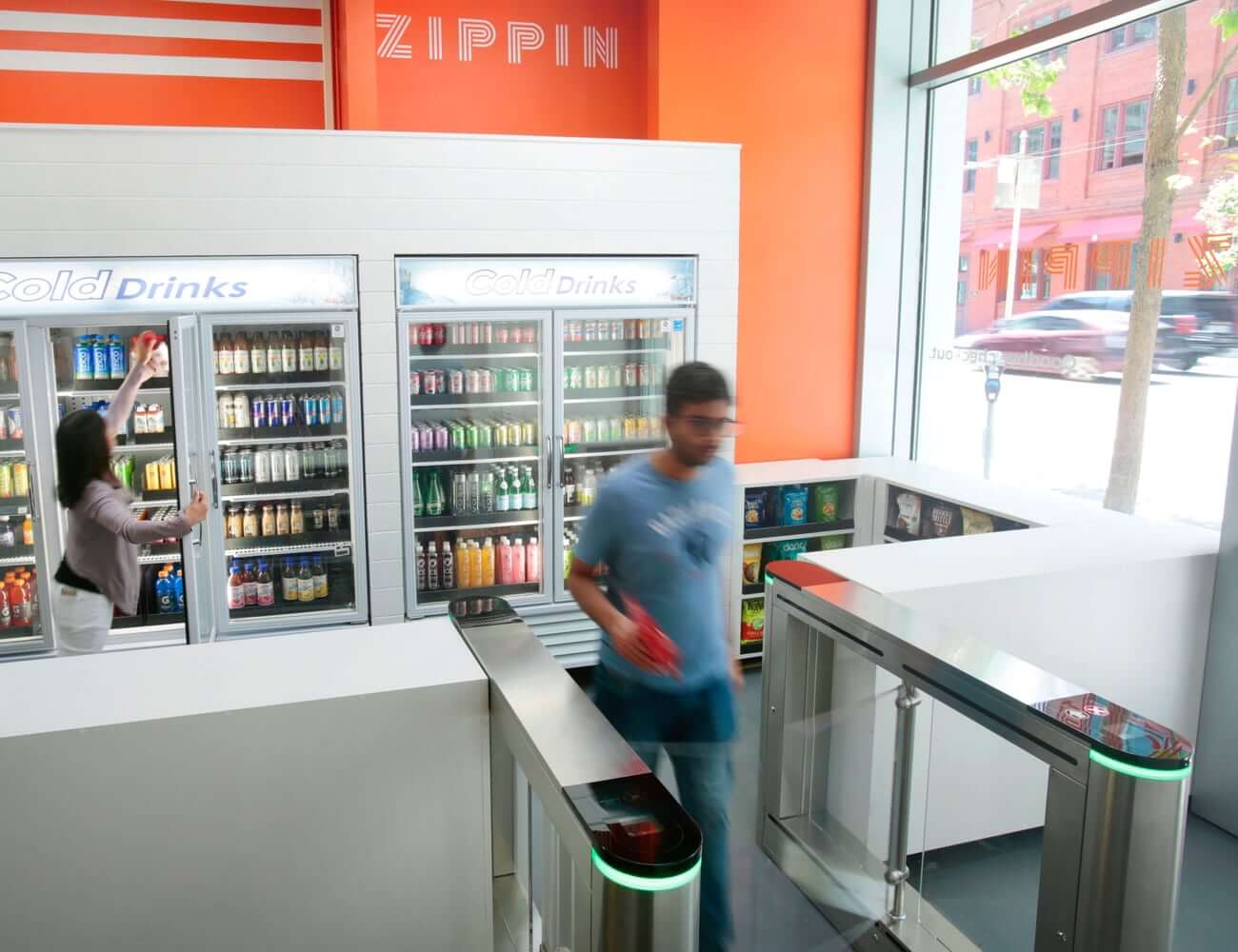
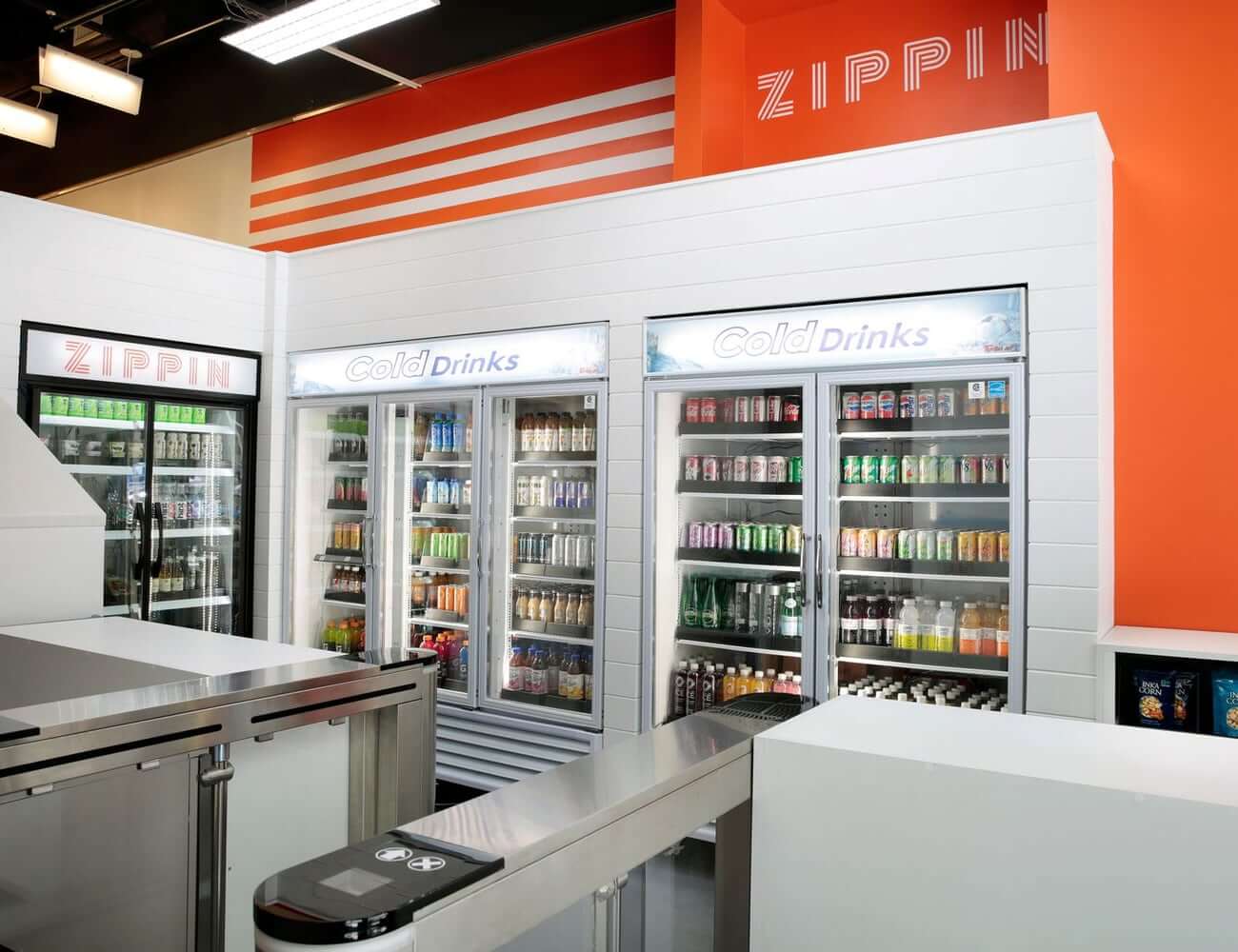
San Francisco-based California-based startup Zippin is also being seen eliminating queues and checkouts by creating fully self-contained stores. To ensure that the right products are “in the right place at the right time,” the company uses unparalleled AI-powered inventory tracking and analytics software.
To date, automated stores without Zippin cash registers operate in the Golden 1 center in San Francisco (base of the basketball team Sacramento Kings), Brazil (operator Lojas Americanas SA has deployed points based on the Zipping solution throughout the country), Japan (Lawson walking distance chain) and Russia (an experienced shop «Azbuka-Vkusa», operates in Moscow).
These formats require unprecedented solutions for inventory management and control. Several startups at once offer their revolutionary solutions for retail players.
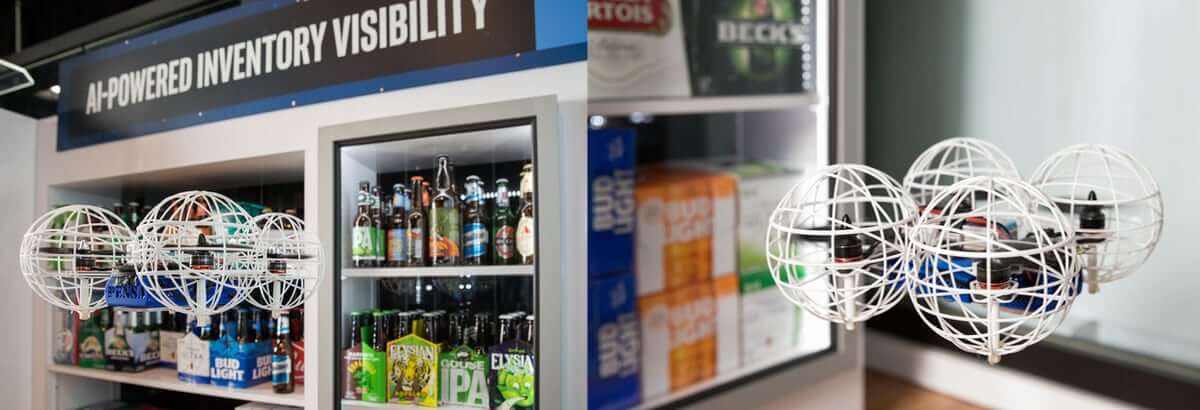
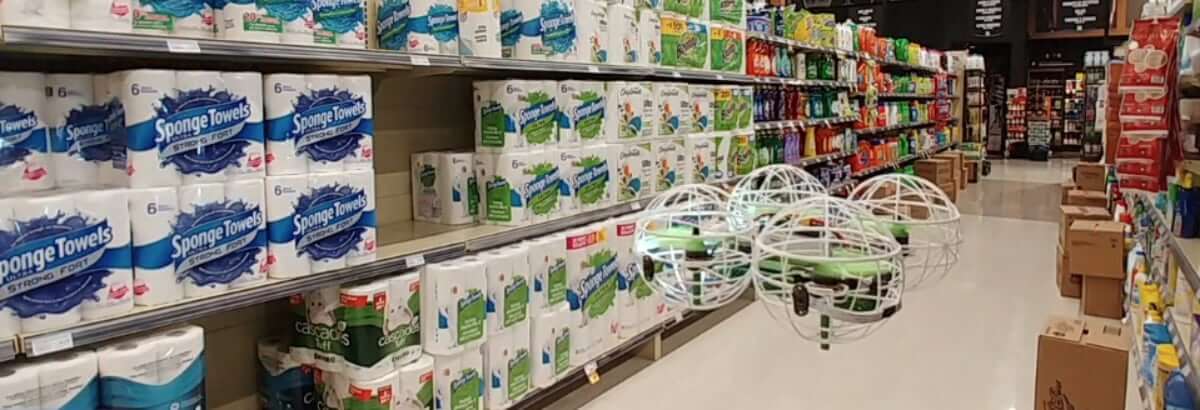
For example, Austin, Texas-based startup Pensa Systems has developed an indoor flying drone that uses cameras to monitor shelf stock in live-view mode.
Until that time, the inventory of shelves was carried out in manual mode, which led to an increase in the labor costs of the service personnel. Moreover, manual scanning systems using applications that have appeared on the market in recent years have retained a fairly high percentage of errors due to the «human factor». In addition, the control throughput was limited by the speed of the merchandise manager moving along the shelves at its own pace.
Automated inspection systems have enabled retail players to optimize data-as-a-service (DAAS) inventory assessments at record levels of speed while providing superior inventory quality. Pensa guarantees accuracy of 98% online.
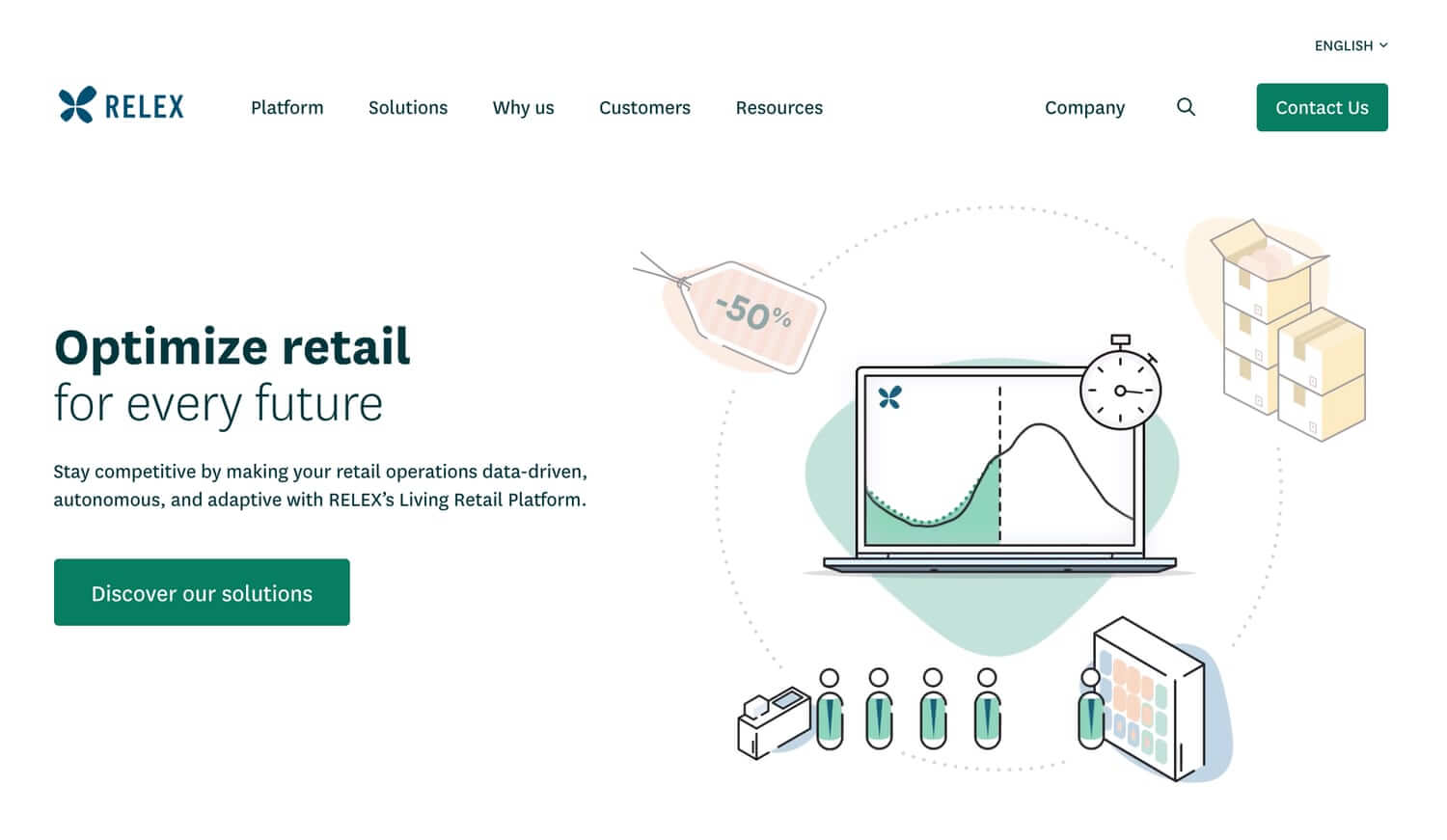
The innovative Relex Solutions provides retailers with specialized inventory planning software powered by artificial intelligence. The implementation of the Living Retail software solution, aimed at minimizing inventory and optimizing sales across all retail functions, gives retailers a record 99% accuracy and, according to the company, reduces inventory by 30% and reduces losses from surplus stock by 40%.
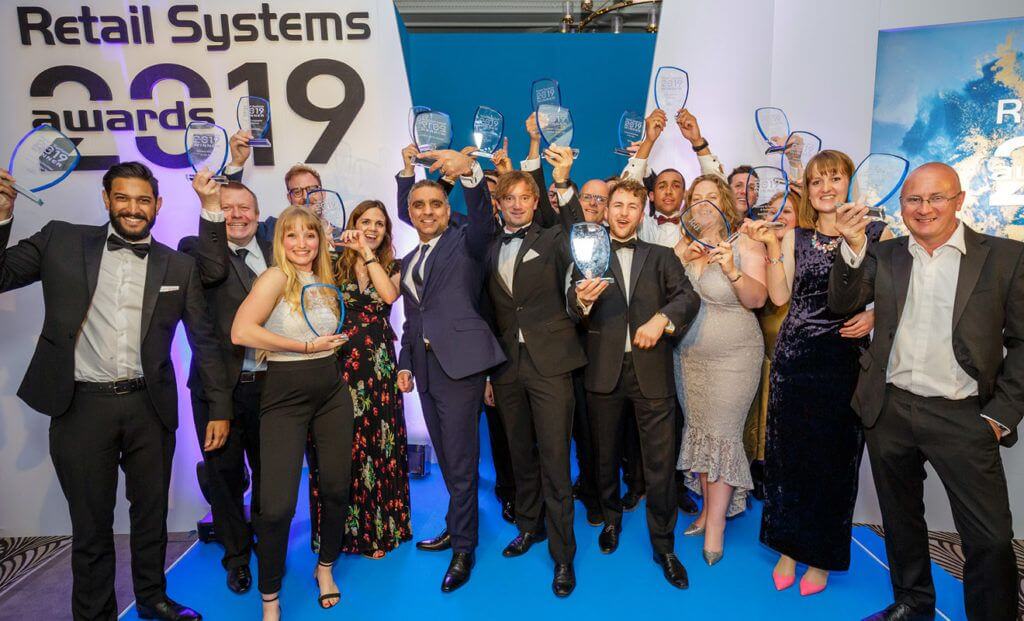
Relex has been highly acclaimed by industry professionals. The startup became the winner of the Retail System Awards-2019.
The importance of software solutions for analytics and big data management in retail is difficult to overestimate. Predictive analytics solutions enable procurers, merchandisers, and stock managers to more accurately assess product purchases by assessing shelf potential “at the right time”. By collecting information across all sales channels and turning big data into intelligent data, the retailer better understands the purchase priorities of each individual customer across the entire range of the store.
Today, retailers have access to quite a few solutions on the market that cover a whole layer of analytics for the functionality of retail chains.
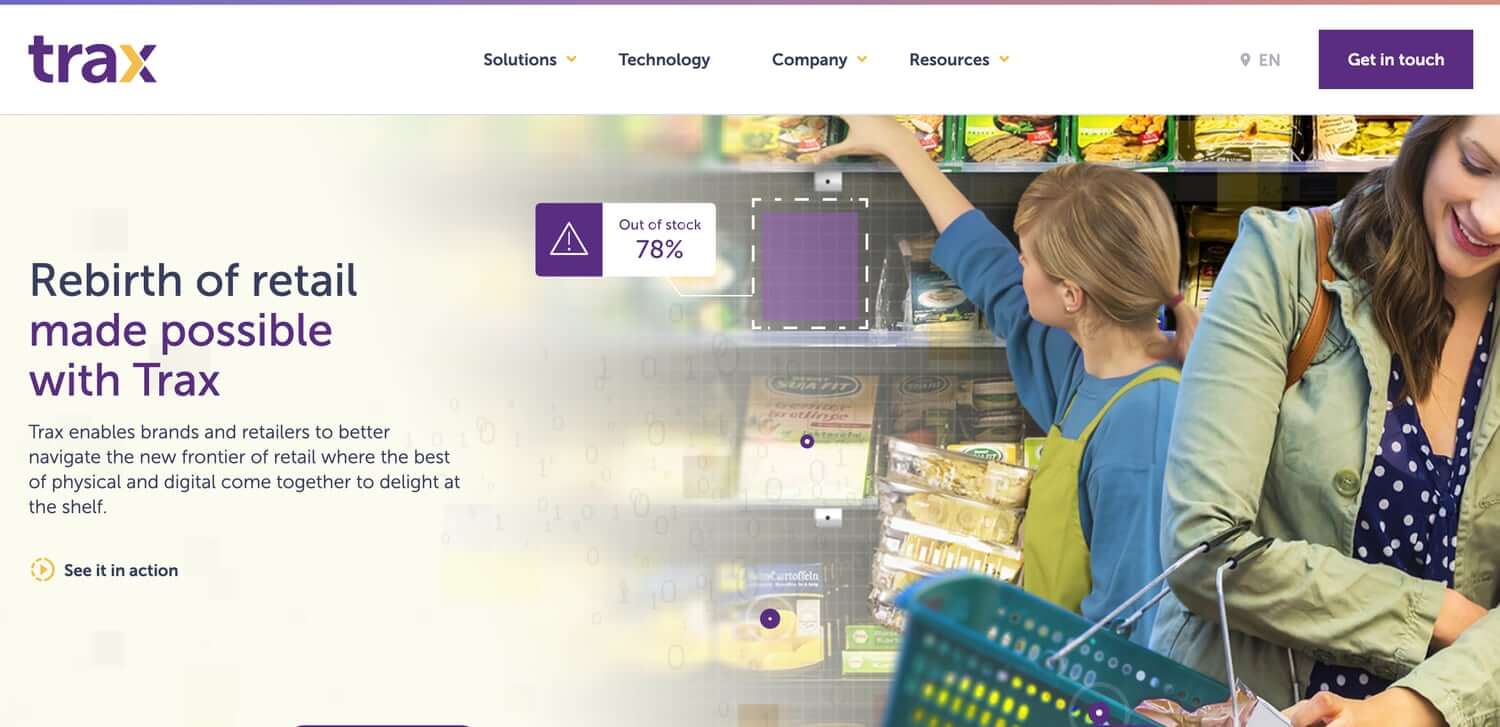
For example, the solution of the Trax company from Singapore, based on the use of computer vision. The developer offers a wide range of services to help retailers manage their stores (including order fulfillment monitoring and inventory tracking).
Big brands like Coca-Cola, Nestle, Unilever, P&G and Heineken, as well as innovative retailers like Best Buy, Sam’s Club, Auchan, and TJ Maxx, use the Trax cloud software. In 2019, startup Trax was acquired by retail-focused French image recognition giant Panorama.
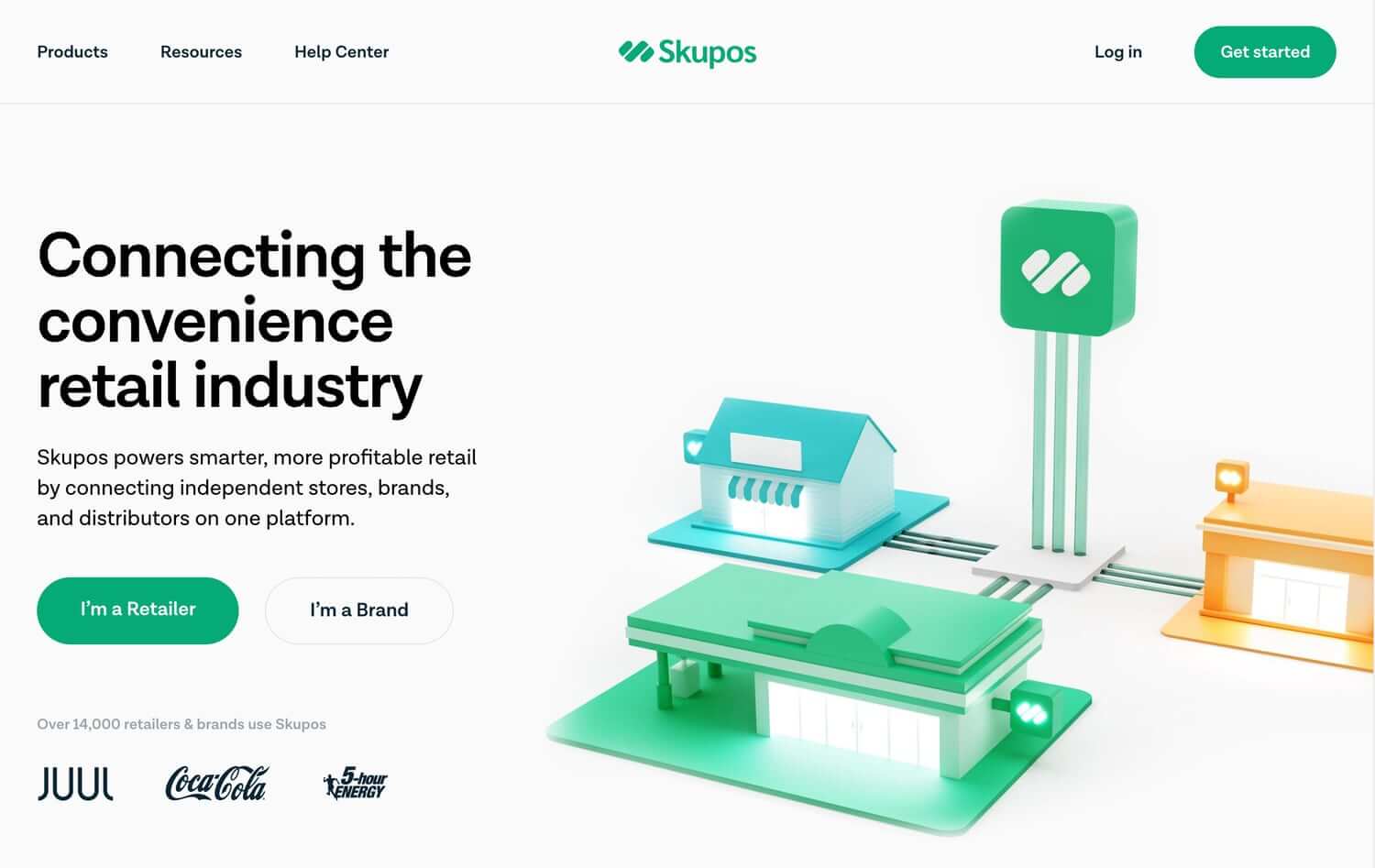
The SKUPOS analytical platform, founded in 2016, focuses its product on the growing segment of small convenience stores. The company partners with 14,000 customers in all 50 states — retailers, distributors and brands — to provide real-time sales analytics, demand forecasts and consumer insights for custom-made promotions.
SKUPOS technology covers 70% of US mini-stores and independent chains (independent stores and small chains account for almost 80% of the North American market) and drives revenue growth across all segments of the retail industry through technologies that connect retail and brands with customers. The SKUPOS platform enables both retailers and brands to compete by better understanding and serving their customers.
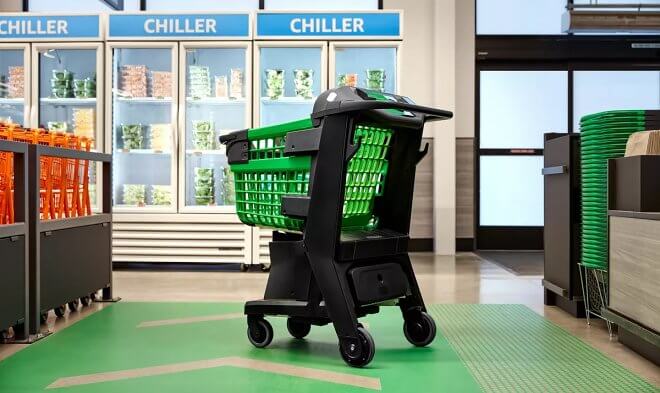
For those outlets that are not ready to implement fully autonomous stores, the same Amazon offers the innovative Dash Cart.
The new product uses machine learning for goods placed in the cart, for which the cart is equipped with a touch screen. Customers must log in with a QR code on the Amazon app before putting their bags in the smart cart. Upon leaving the store, sensors identify the items in the cart, and then the purchase amount is automatically debited from the bank card linked to the Amazon account.
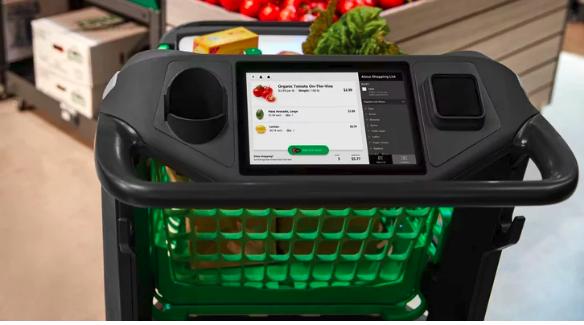 Amazon explains that Dash Cart uses a combination of computer vision algorithms and a barcode scanner in the introductory video. The system identifies items with a barcode when they are placed in the cart, and for items without a barcode, a touch screen is used. Dash Cart works almost like a fully self-service mobile device, significantly speeding up the shopping process in the supermarket, skipping the checkout process.
Amazon explains that Dash Cart uses a combination of computer vision algorithms and a barcode scanner in the introductory video. The system identifies items with a barcode when they are placed in the cart, and for items without a barcode, a touch screen is used. Dash Cart works almost like a fully self-service mobile device, significantly speeding up the shopping process in the supermarket, skipping the checkout process.

Amazon launched Dash Cart at its grocery store in Woodland Hills, California, in the end of 2020.
Interactive loyalty
Powered by big data analytics, artificial intelligence and machine learning, MIT’s Computer Science and Artificial Intelligence Lab has named one of the 50 Greatest Innovations Ever Made.
By processing huge arrays of big data with the help of artificial intelligence, retailers and brands are trying to avoid situations when warehouses are overcrowded due to an incorrect assessment of consumer demand and, as a result, overstocking of shelves and subsequent markdowns of goods — problem number 1 in retail.
In 2019, analyst firm Coresight Research, jointly with the developer of retail analytics solutions Celect, disclosed the cost of “inventory errors” by assessing the size of retailers’ losses in a report with the symbolic title “Revealing Hidden Costs with Poor Inventory Management”. Annually, non-food stores lose an astronomical amount of $ 300 billion due to markdowns of illiquid assets. This is equivalent to 12% of total sales. Among the main reasons for markdowns, respondents who participated in the survey cited erroneous estimates of required inventory, which accounts for more than half (53%) of unplanned markdown costs.
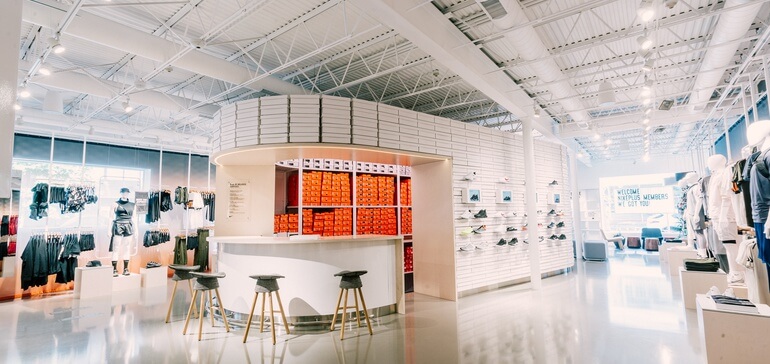
In August 2019, sportswear and footwear manufacturer Nike acquired the predictive analytics platform Celect. Integrated into the Nike information system (in addition, in 2018 Nike acquired the IT company Zodiac, which is engaged in online consumer data analysis), Celect AI solutions will help the world leader to better predict consumer behavior. Experts noted that the interest of the global giant has shifted from the acquisition of retail companies such as Converse and Hurley, to the purchase of IT startups that allow for more accurate management of inventory and predict consumer behavior.
Nike can easily give the palm in the introduction of new retail formats. The leader of the apparel retail market successfully «crosses» digital technologies with classic stores, being in the wake of changes in global retail. It is believed that classic retail is not so nimble in inventing new formats. Therefore, experts treat any experiments in the industry with special attention. For example, Nike Live.
To put it simply, Nike Live is a retail store exclusively for Nike Customer Club members, with a focus on digital communications with consumers, customer connectivity through a mobile app, and product changes driven by big data analytics and valuation. consumer demand occurs every two weeks.
The first experimental Nike Live concept opened in Los Angeles in 2019. What is it like on the inside?
1. Automated as much as possible
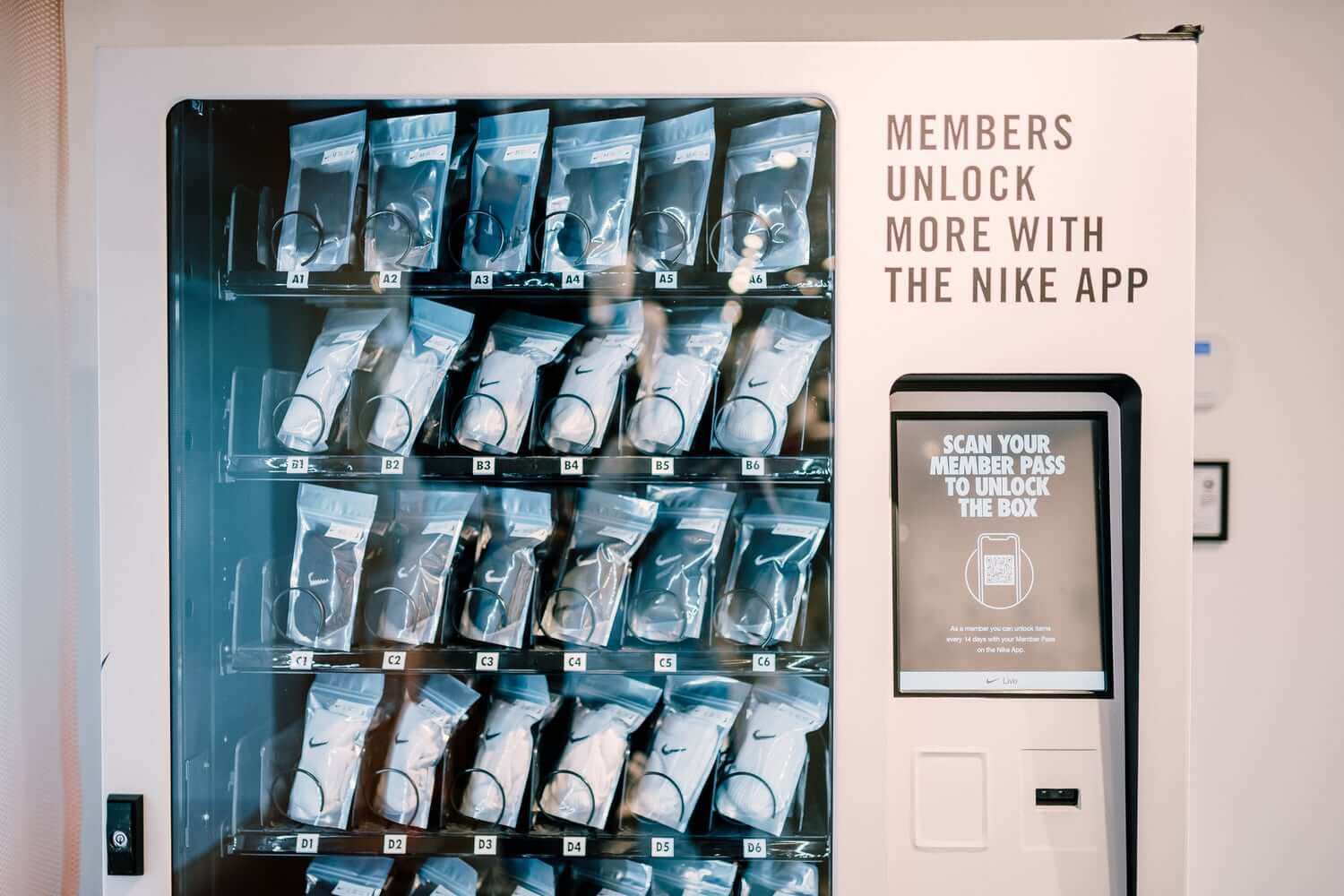
Hot goods such as socks are sold exclusively through vending machines. In addition, the navigation inside the store is also digitized — the buyer can at any time get an idea of the availability of goods in the section by pointing the cell phone camera at the marker located on the wall.
2. Real-time product info
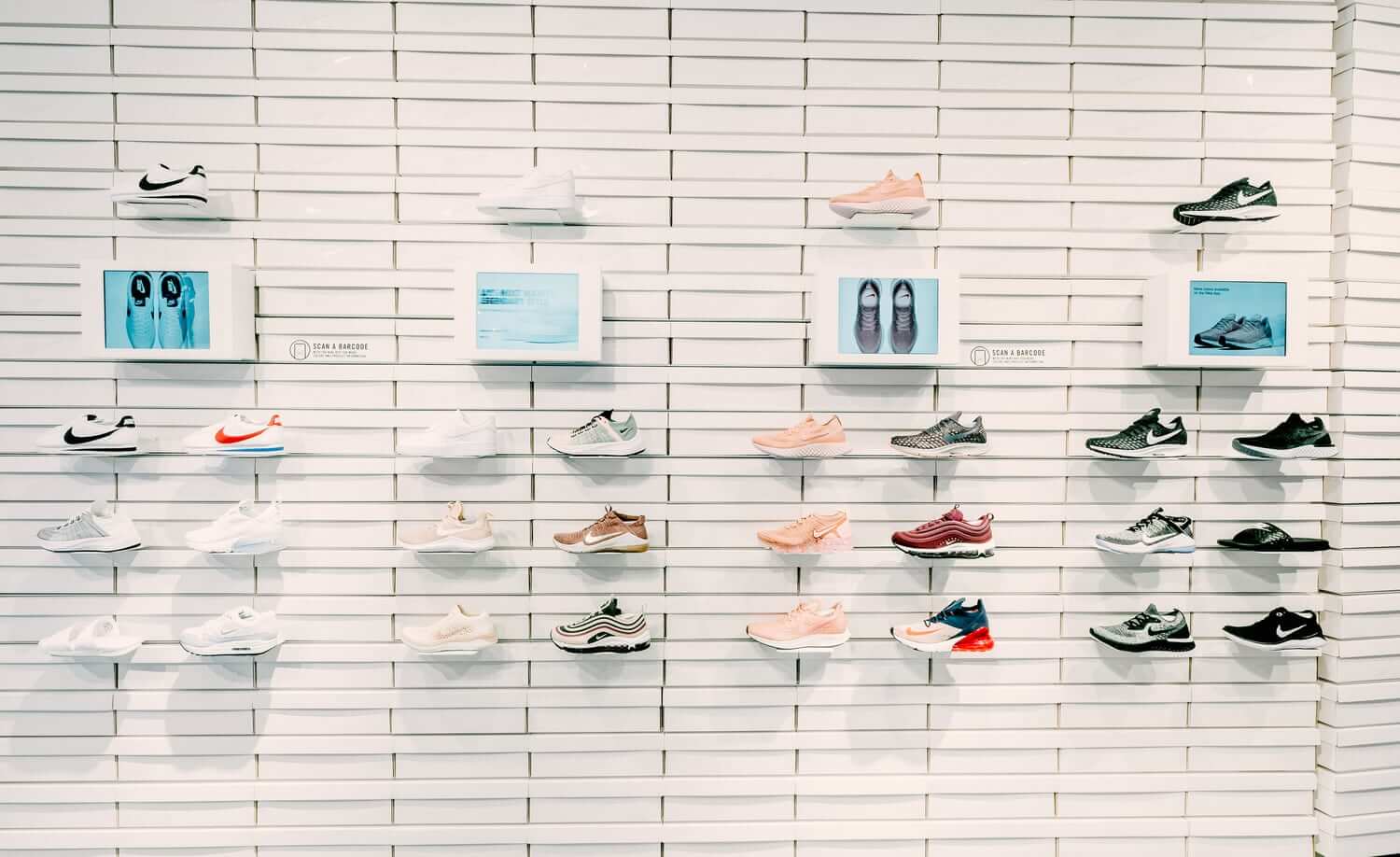
Stands with sneakers are equipped with electronic displays, which provide the most complete information about the product. The product is replaced every two weeks, and the information system immediately updates information about new products in Nike mobile apps.
Nike Live engages loyal consumers even more in the communications process by delivering new consumer experiences. Omnichannel interaction with consumers through the mobile application «flows» into retail, which allows us to provide even more privileges to loyal customers, offering individual price offers, thereby further increasing customer loyalty.
